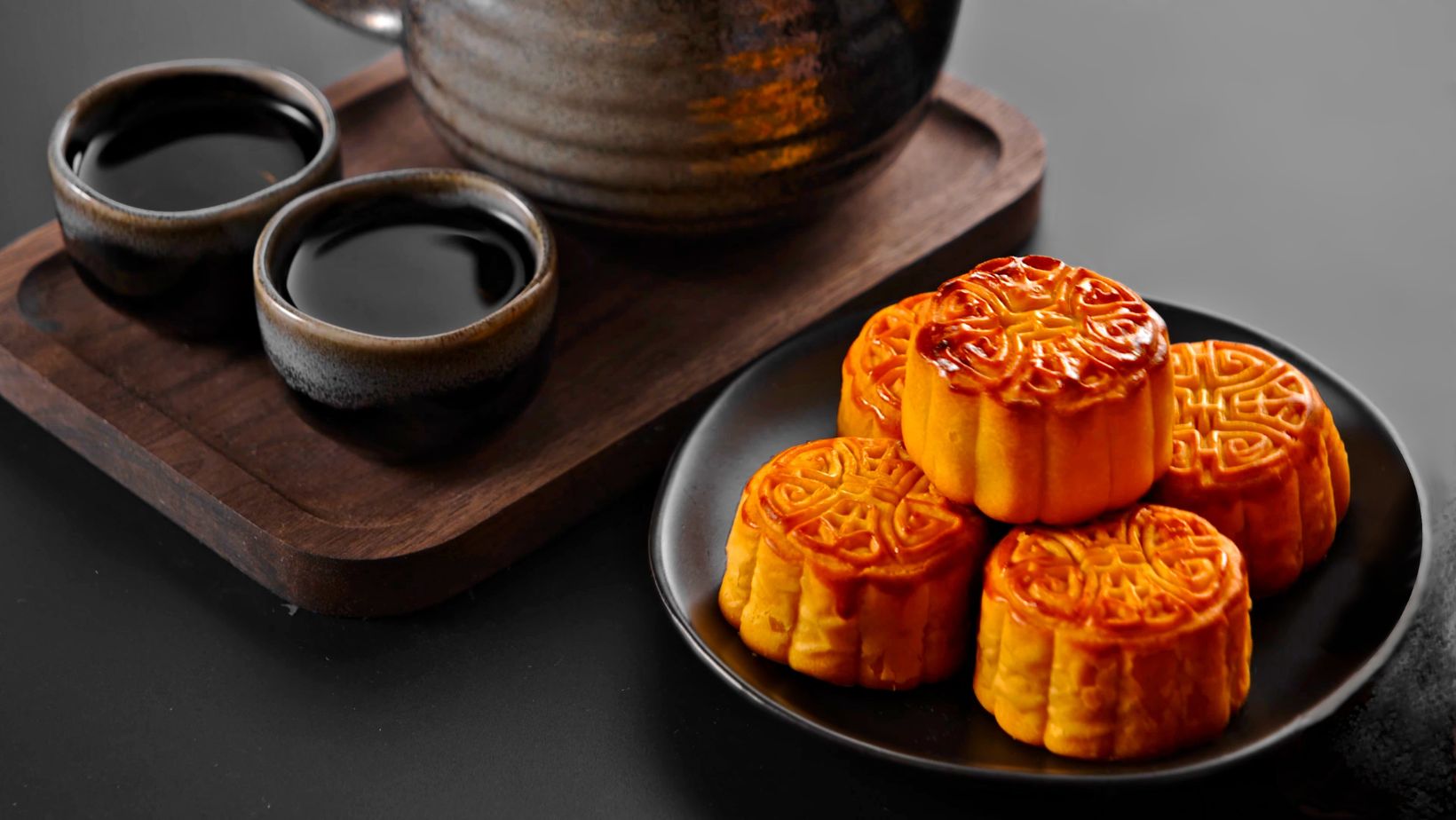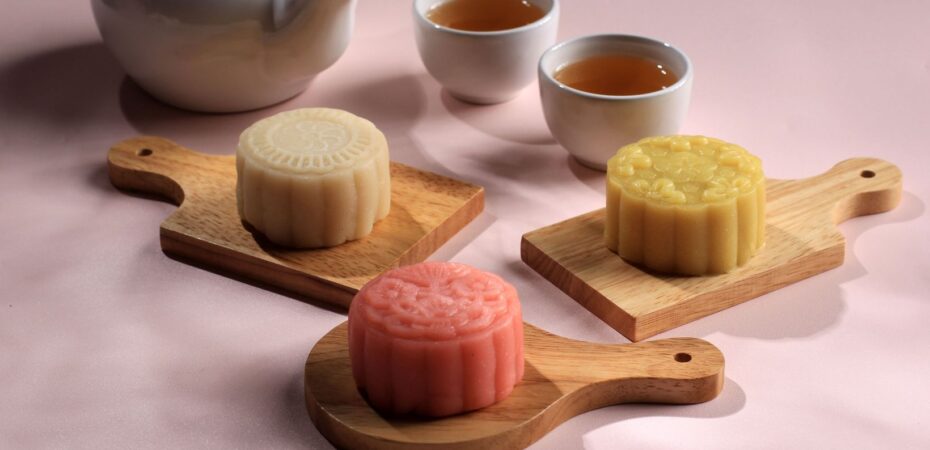The Mid-Autumn Festival celebrated with much fervour and enthusiasm, is synonymous with mooncakes.
These delightful pastries, rich in history and cultural significance, have evolved over the years to cater to diverse palates.
Among the myriad flavors available, two stand out for their popularity and contrast: Durian and Lotus Seed Paste.
Let’s embark on a culinary exploration to understand the differences between these two iconic mooncake fillings.
1. Origins and Cultural Significance
Durian Mooncakes
Durian, often hailed as the ‘King of Fruits’, is a fruit native to Southeast Asia.
Revered for its unique taste and pungent aroma, it’s a fruit that divides opinion – you either love it or can’t stand it.
The incorporation of durian into mooncakes is a relatively recent phenomenon, reflecting the local love for this fruit, especially in regions like Singapore and Malaysia.
Lotus Seed Paste Mooncakes
Lotus seed paste is the quintessential mooncake filling, deeply rooted in Chinese tradition.
The lotus, symbolizing purity and renewal, has been used in Chinese cuisine and medicine for centuries.
The use of its seeds to make a sweet paste for mooncakes has made it a classic choice for the Mid-Autumn Festival.
2. Taste and Texture
Durian Mooncakes
The filling is creamy and custard-like, with a strong, distinctive flavor that’s a blend of sweet and savory.
The aroma is intense, and for many, it’s an acquired taste. The texture is smooth, closely resembling the actual fruit’s flesh.
Lotus Seed Paste Mooncakes
This filling is sweet with a subtle nuttiness.
The texture is smooth and dense, offering a rich mouthfeel.
The taste is more uniform and less divisive than durian, making it a universally loved choice.
3. Variations and Innovations
Durian Mooncakes
Given the fruit’s popularity in Southeast Asia, there are several variations of durian mooncakes:
● Pure Durian: Made with just the flesh of the fruit, offering an intense durian experience.
● Durian with Salted Egg Yolk: Combining the creamy durian with the richness of a salted egg yolk.
● Durian Snow-Skin: A non-baked version with a mochi-like exterior.
Lotus Seed Paste Mooncakes
While the traditional lotus seed paste is a classic, there have been several innovations:

● White Lotus Seed Paste: A less sweet version, often preferred for its subtle flavor.
● Lotus Seed Paste with Melon Seeds: Adding a bit of crunch to the smooth paste.
● Lotus Seed Paste with Multiple Egg Yolks: Ranging from one to four yolks, symbolizing the full moon and its different phases.
4. Nutritional Value
Durian Mooncakes
Durian is rich in carbohydrates, making it a high-energy food.
It also contains vitamins like Vitamin C and B-complex and is a good source of healthy dietary fats.
However, when processed into mooncakes, sugar and other preservatives might be added, altering its nutritional profile.
Lotus Seed Paste Mooncakes
Lotus seeds are a good source of protein, magnesium, and phosphorus.
They’re also believed to have anti-aging properties.
However, the mooncake filling often contains added sugars, reducing its overall health benefits.
5. Pairing and Consumption
Durian Mooncakes
Given the strong flavor profile of durian, it’s best paired with milder beverages like jasmine tea or even plain water. This helps cleanse the palate and balance the intense taste.
Lotus Seed Paste Mooncakes
The sweet and rich lotus seed paste pairs beautifully with Chinese teas, especially those with a slightly astringent profile like Tie Guan Yin or Pu’er.
The tea helps cut through the sweetness and enhances the overall tasting experience.
6. Popularity and Availability
Durian Mooncakes
These are especially popular in regions where durian is a favored fruit, like Singapore, Malaysia, and Thailand.
Their availability might be seasonal, coinciding with the durian fruiting season.
Lotus Seed Paste Mooncakes
Being a classic choice, these mooncakes are available widely across all regions celebrating the Mid-Autumn Festival.
Their universal appeal ensures they’re a staple offering in all mooncake shops.
7. Production and Preparation
Durian Mooncakes
The preparation of durian mooncakes requires careful handling due to the fruit’s delicate nature.
Fresh durian pulp is often preferred to capture the fruit’s authentic flavor. The pulp is extracted, seeds removed, and then blended into a creamy paste.
Depending on the recipe, additional ingredients like sugar or cream might be added to achieve the desired consistency and taste.
The challenge lies in preserving the fruit’s natural aroma and flavor during the mooncake-making process.
Lotus Seed Paste Mooncakes
The process of making lotus seed paste is more time-consuming.
Lotus seeds are first soaked to soften them. After removing the green sprouts from the seeds (which can impart a bitter taste), they are boiled until soft.

The softened seeds are then mashed or ground into a paste.
Sugar and oil are added to achieve the sweet, velvety texture characteristic of mooncake fillings.
8. Shelf Life and Storage
Durian Mooncakes
Due to the perishable nature of durian, these mooncakes have a shorter shelf life.
They often need refrigeration and are best consumed within a few days of purchase.
Snow-skin durian mooncakes, in particular, must be kept chilled and eaten relatively quickly to enjoy their optimal flavor and texture.
Lotus Seed Paste Mooncakes
These mooncakes, especially the baked variety, have a longer shelf life.
They can be stored at room temperature for several days, if not weeks, without losing their quality.
However, it’s always advisable to check the expiry date and storage instructions when purchasing.
9. Price Point and Affordability
Durian Mooncakes
Given the premium nature of fresh durian, especially sought-after varieties like Mao Shan Wang, durian mooncakes tend to be more expensive.
The price also reflects the intricate process of ensuring the mooncake retains the fruit’s authentic taste.
Lotus Seed Paste Mooncakes
While prices can vary based on brand and additional ingredients (like salted egg yolks), lotus seed paste mooncakes are generally more affordable than their durian counterparts.
Their widespread popularity and the availability of ingredients make them accessible to a broader audience.
10. Cultural and Regional Preferences
Durian Mooncakes
These mooncakes resonate deeply with durian enthusiasts, especially in Southeast Asia.
In regions like Singapore, where durian is celebrated, these mooncakes have become a symbol of local flavor and innovation.
Lotus Seed Paste Mooncakes
Being deeply rooted in Chinese tradition, lotus seed paste mooncakes hold a special place in the hearts of many.
They are often the preferred choice for gifting, symbolising wishes of prosperity and unity.
Final Thoughts
The world of mooncakes is vast and varied, reflecting the rich tapestry of cultures and tastes that contribute to its evolution.
While durian mooncakes represent a bold, modern take on a traditional delicacy, lotus seed paste mooncakes remain a timeless classic, evoking nostalgia and reverence.
Choosing between the two is not about determining which is superior but about embracing the diverse culinary landscape they represent.
Whether you’re savoring the bold flavors of durian or the comforting sweetness of lotus seed paste, each bite tells a story of tradition, innovation, and the joy of shared experiences.
Celebrate this Mid-Autumn Festival by exploring both and discover the unique tales they have to tell.


 By
By 




